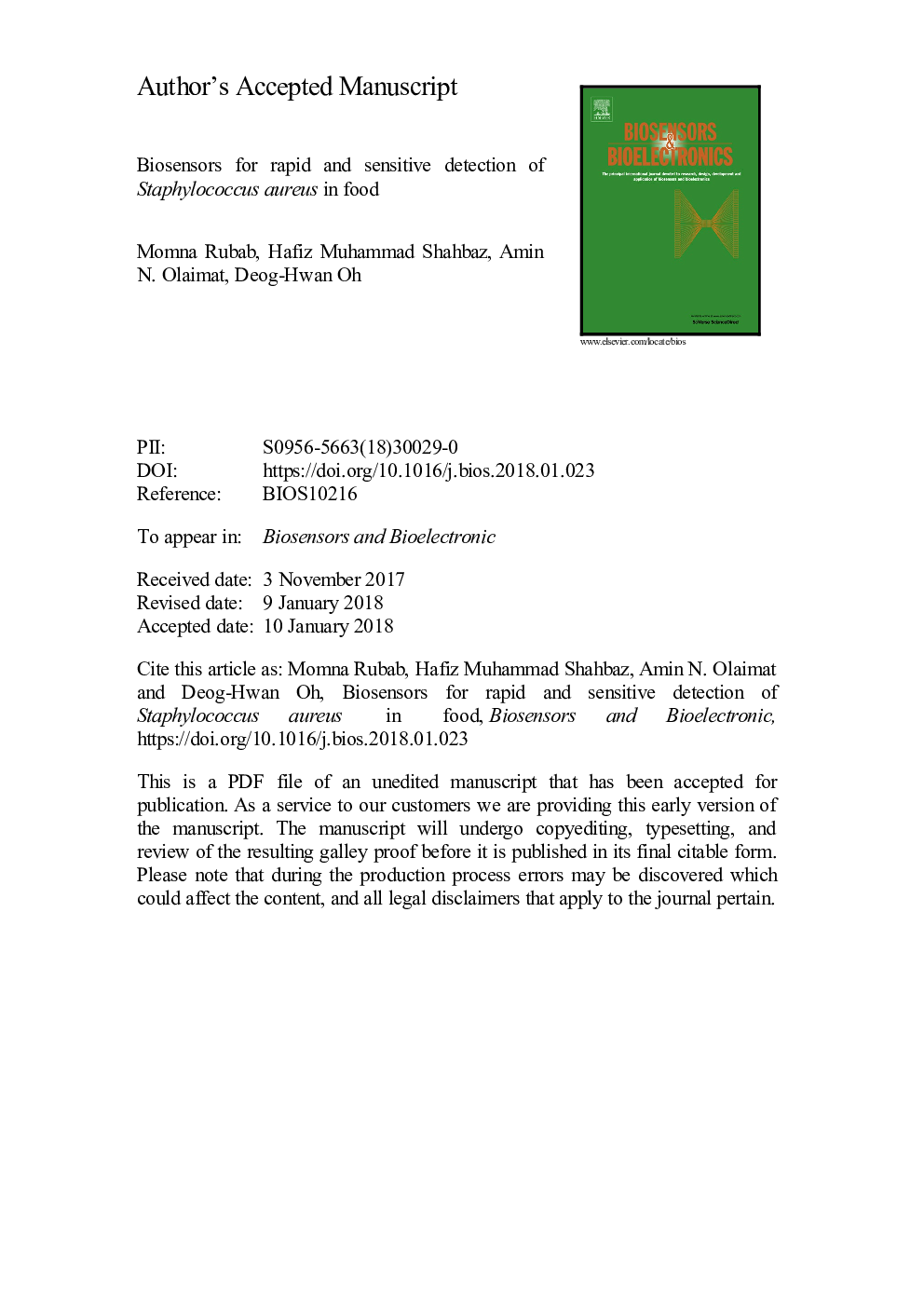| Article ID | Journal | Published Year | Pages | File Type |
|---|---|---|---|---|
| 7229682 | Biosensors and Bioelectronics | 2018 | 41 Pages |
Abstract
Foodborne illness outbreaks caused by the consumption of food contaminated with harmful bacteria has drastically increased in the past decades. Therefore, detection of harmful bacteria in the food has become an important factor for the recognition and prevention of problems associated with food safety and public health. Staphylococcus aureus is one of the most commonly isolated foodborne pathogen and it is considered as a major cause of foodborne illnesses worldwide. A number of different methods have been developed for the detection and identification of S. aureus in food samples. However, some of these methods are laborious and time-consuming and are not suitable for on-site applications. Therefore, it is highly important to develop rapid and more approachable detection methods. In the last decade, biosensors have gained popularity as an attractive alternative method and now considered as one of most rapid and on-site applicable methods. An overview of the biosensor based methods used for the detection of S. aureus is presented herein. This review focuses on the state-of-the-art biosensor methods towards the detection and quantification of S. aureus, and discusses the most commonly used biosensor methods based on the transducing mode, such as electrochemical, optical, and mass-based biosensors.
Related Topics
Physical Sciences and Engineering
Chemistry
Analytical Chemistry
Authors
Momna Rubab, Hafiz Muhammad Shahbaz, Amin N. Olaimat, Deog-Hwan Oh,
